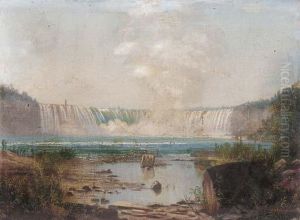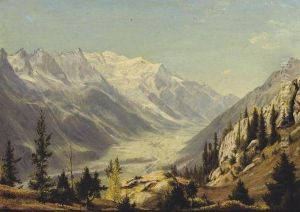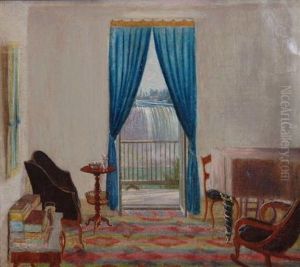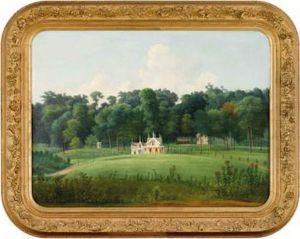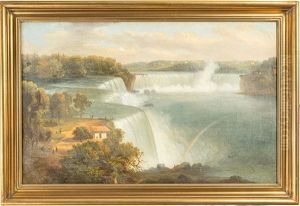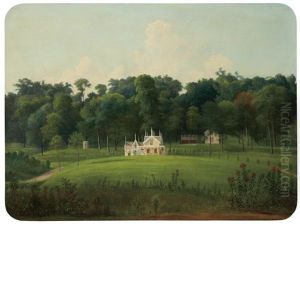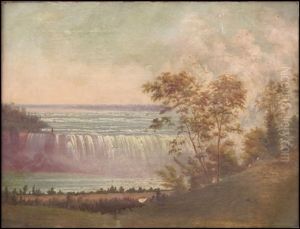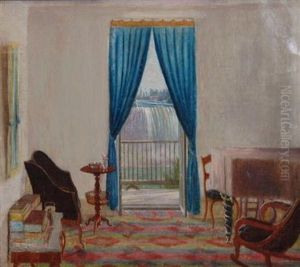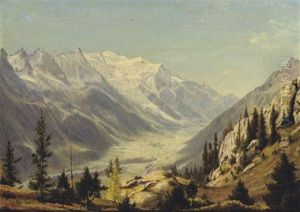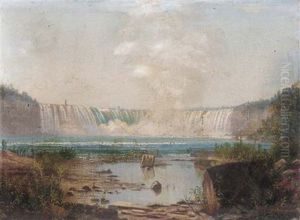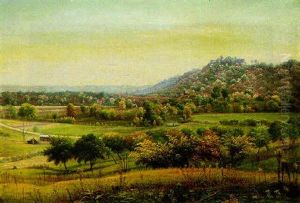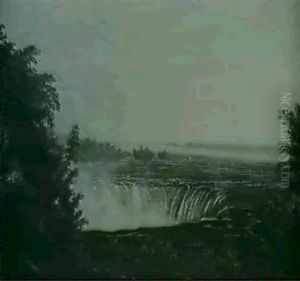Godfrey N. Frankestein Paintings
Godfrey N. Frankenstein was an American painter, part of the Frankenstein family of artists who emigrated from Germany to the United States. Born in 1820, he was one of the five artistic Frankenstein brothers, the others being Gustavus, George, John Peter, and Joseph. The Frankensteins were part of the early wave of immigrant painters who contributed to the American art scene of the 19th century, particularly in the areas of landscape and portrait painting.
Godfrey was born to Godfrey Frankenstein, a landscape and portrait painter himself, who had moved from Germany to New York and later to Cincinnati, Ohio. It was in this vibrant, artistic environment that Godfrey honed his skills. He was known for his landscape paintings, which were influenced by the Hudson River School, a mid-19th century American art movement embodied by a group of landscape painters whose aesthetic vision was influenced by romanticism.
Godfrey's works often depicted the American wilderness, capturing the expansive and untamed beauty of the United States, from the White Mountains of New Hampshire to the expansive vistas of the West. He is especially remembered for his series of paintings of the White Mountains, which are considered significant contributions to American landscape painting.
Despite the acclaim, Godfrey N. Frankenstein and his brothers have often been overshadowed by more prominent figures of their time. Nonetheless, their works are valuable for their historical and artistic contributions to the development of American art. Godfrey's legacy lives on through his paintings, which are held in various collections and occasionally appear at auctions or in exhibitions focused on the period.
Godfrey N. Frankenstein's life was cut short when he died in 1873. His death marked the end of a career that, while not as celebrated as some of his contemporaries, was instrumental in the exploration and celebration of the American landscape through the medium of painting.
